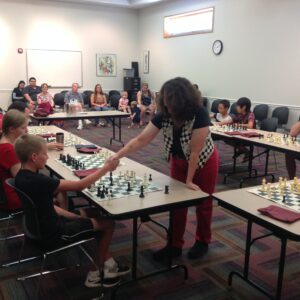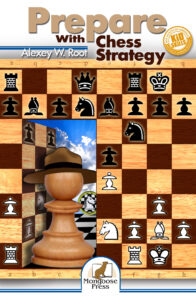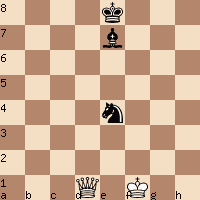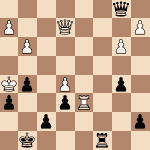This “How to teach chess” article (part three) and the forthcoming article (part four) are for chess players who already know the basics or for those who are teaching intermediate or advanced players. That is, part three and part four are for you to move beyond the basics. Or, if you are a chess teacher, for you to help others progress beyond the basics. The basics include how the chessmen move (including special rules such as castling and en passant) and the easier endgame checkmates, such as king and two rooks versus king. If you are teaching a beginner or mixed group, cover that basic material by following “How to teach chess (part one)” and “How to teach chess (part two).”
As I wrote in “How to teach chess (part two),” I am teaching chess again at Coppell Gifted Association’s MOSAIC from July 23-27. My 9:00-10:30 a.m. “Chess-Advanced” class in July will be composed of students who either have previously had me as an instructor or who have a chess rating from the US Chess Federation or from FIDE (World Chess Federation). For that advanced class, I will teach more advanced topics such as the Philidor’s position. In this article (part three) and in my next article (part four), I will outline exactly what I will teach these more advanced students. You can use these articles as a self-study guide (for improving your own chess). Or, if you are a chess teacher, you might try my outlined plans with your advanced students.

On Monday I will give a simultaneous chess exhibition (simul). As shown in the photo, a simul means that I play against multiple opponents at once. If you are giving a simul, position yourself in the middle of the chess tables so that you can easily walk from one board to another. For the simul on Monday, July 23, I will have just a king. But my opponents (students) will have either a king and a queen or a king and a rook against me. This simul will test if students remember the king and queen versus king mate and the king and rook versus king mate. If you want to test yourself on these checkmates, or test your students without giving a simul, go to the “checkmates” section of https://www.chess.com/drills.
Whichever checkmate each student does not complete correctly (or efficiently) is where that student will start on the daily morning checkmate testing on Tuesday. Throughout the week, I will test on those checkmates and other endings (such as king and pawn versus king), in a similar order to those listed by Elliott Neff. My exact order of drills is in my book People Places Checkmates: Teaching Social Studies With Chess.
After the simul, students will partner up with one person having a king and a pawn on the seventh rank (one square away from promoting on the eighth rank) versus the partner having a king and a queen. Depending on which pawn is on the seventh rank (a rook’s pawn, a knight’s pawn, a bishop’s pawn, etc.), some positions are draws and some positions are wins for the side with the king and queen. Students will experiment and take notation. The whole class will reconvene with students using their notation to prove which positions are drawn and which are not and why. This particular experiment reinforces how to checkmate with a king and queen for the stronger side and allows for stalemate as a defense for the side with the king and the pawn.
As taught in Science, Math, Checkmate: 32 Chess Activities for Inquiry and Problem Solving, the pawn’s seventh-rank placement (on the a, b, c, d, e, f, g, or h files) is the independent variable which determines if the experiment is a draw for the weaker side or not. Wikipedia has an article about this endgame.

After the whole class has discussed the experiment’s results, it will be time for round 1 of the five-round tournament. Because this is an advanced class, students will be required to write notation for each move of the game. As games finish, the notation should be used for post mortems, which means opponents analyze their just-played games with each other. Any games that don’t finish can be reconstructed, using notation sheets, on Tuesday.
On Tuesday, students that have leftover tournament games from Monday will finish those games. Other students will either test with me on endgame checkmates or will be practicing those checkmates while waiting to be tested. Then I will tell the class that they will be partnering up to complete a worksheet that has 10 tactical problems. Each tactic is just one move long and the answer wins material. The answer could be a fork, pin, skewer, discovered attack, or exploiting an overloaded piece. I will briefly explain, and show on the demonstration board, examples of each of these tactics. These tactics are part of the Boy Scouts Chess merit badge requirements, which I cover in my book Prepare With Chess Strategy.
Within each pair, students set up the tactical position using notation I have provided. For example, problem one asks paired students to set up the following: White: Kf1, Qd1. Black: Ke8, Ne4, Pe7. White to move. After the position has been set up on a board, each student writes down the answer. When both students have written something, they are allowed to touch the chessmen and demonstrate their answers. The reason for having students write their answers first, rather than move chessmen on the board initially, is so that the faster student in the pair does not reveal the answer to the other student.

Did you find the correct move for White? The answer is 1. Qa4+, forking the black king and black knight and winning a knight.
If some pairs finish the worksheet before other pairs do, they can play Progressive Chess, which emphasizes the role of “tempo” in chess. Normally, to gain a tempo means that you forced your opponent to waste a move. In Progressive Chess, the rules mean that sometimes you (and your opponent) just get extra moves! The chess variant is outlined in Prepare With Chess Strategy but you can also read about it here. Like most variants, Progressive Chess is a lot of fun so try it with your friends and/or your students. When all pairs have finished the tactics worksheet, it will be time for the second tournament game!
In my next article, How to teach chess (part four), I will share what I taught to my advanced students on Wednesday, Thursday, and Friday of our July 23-27 week.
